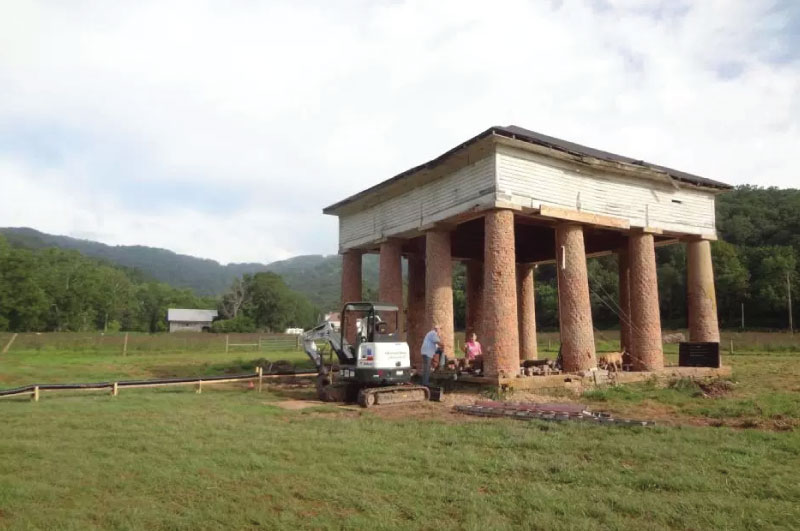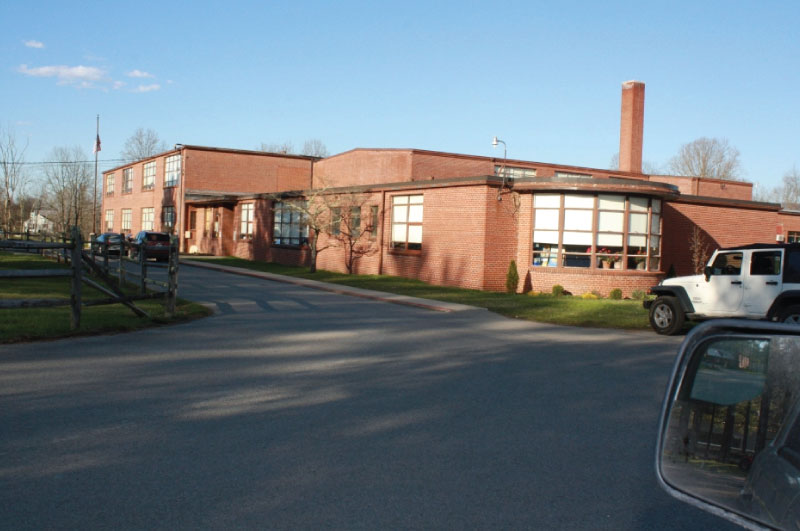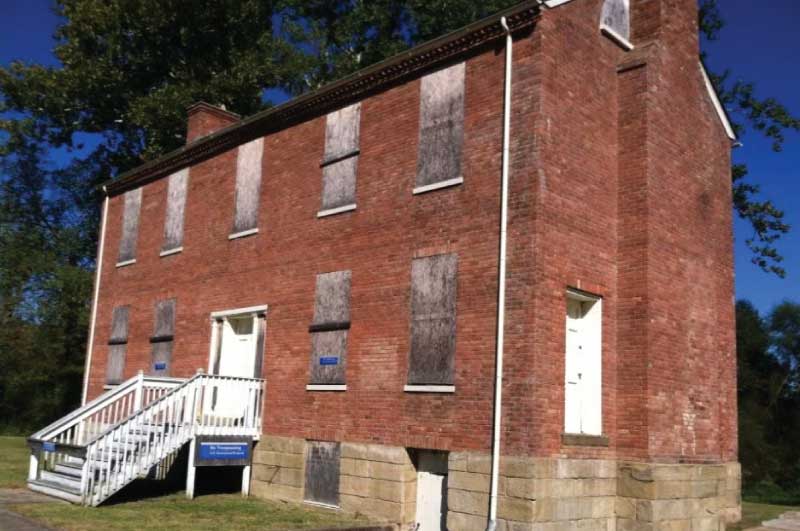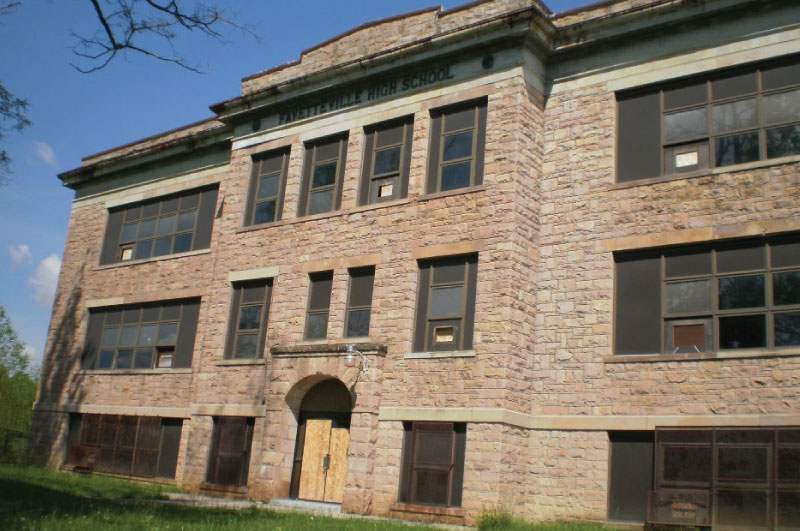|
Good news! On Thursday, February 16th, legislation was introduced in Congress that would make important changes to the historic tax credit. The bipartisan Historic Tax Credit Improvement Act (HTCIA)(H.R. 1158 / S.425) closely resembles legislation introduced in the last Congress that would improve access to the credit for smaller rehabilitation projects that will help revitalize our small towns and our inner cities.
The legislation was introduced in the House of Representatives by Congressmen Mike Kelly (R-PA) and Earl Blumenauer (D-OR) and is supported by 18 cosponsors, including nine Republicans and nine Democrats and eight members of the Ways and Means Committee. Senators Susan Collins (R-ME) and Ben Cardin (D-MD) introduced companion legislation in the Senate and were joined by Senators Cochran (R-MS), Gillibrand (D-NY), Leahy (D-VT), and Wicker (R-MS). The Historic Tax Credit Improvement Act encourages redevelopment of smaller, income-producing properties by:
Please contact your members of Congress and urge them to support the Historic Tax Credit Improvement Act,H.R. 1158 / S.425. Take Action The HTCIA provides Members of Congress with a way to indicate their support for the credit and offers several reform ideas that could be incorporated into a larger tax reform bill. Adding cosponsors to the legislation is a critical step to protecting the historic tax credit during the tax reform process. Urge Members of Congress to co-sponsor the Historic Tax Credit Improvement Act H.R. 1158 / S.425:
Contact district offices of both House and Senate Members and ask to schedule a meeting: To locate the name and phone number of your House Representative go to: http://www.house.gov/representatives/find/ To locate the names and phone number of your Senators go to: http://www.senate.gov/general/contact_information/senators_cfm.cfm?OrderBy=state&Sort=ASC Helpful Tips:
Resources:
o Shaw Sprague ([email protected]) o Renee Kuhlman ([email protected]) Thank you for speaking up in support of the federal historic tax credit! With your ongoing engagement, the historic tax credit will continue to revitalize our communities, stimulate the economy, and preserve our irreplaceable historic buildings. By Brooks McCabe
Republished from the State Journal at http://www.theet.com/statejournal/historic-preservation-is-a-major-opportunity-in-w-va/article_63897cca-e357-5fa4-b357-65712081052b.html There is a renewed interest in increasing West Virginia’s historic rehabilitation tax credit from 10 percent to 25 percent. The suggestion has considerable merit, even given the state’s current dire financial situation. The state is redefining itself as a diversified economy supported by a high quality of life rooted in the natural splendor of its mountains, streams and valleys, accentuated by historic downtowns with a size and scale of communities making it Almost Heaven. West Virginia is in the middle of learning to live within its means. The current fiscal crisis is front and center; it must be dealt with immediately, as painful as it might be. However, everyone also agrees the long-term solution to West Virginia’s woes is to significantly grow a diversified economy and the jobs that go along with it. The end game is more and better jobs; the state’s fiscal shortfalls will be lessened accordingly. It is further agreed that state government’s role is not to create jobs, but to provide a regulatory and tax structure that strongly encourages private-sector investment and job creation. This is exactly what a well-conceived historic rehabilitation tax credit program can and will do. Revitalize West Virginia’s Downtowns is a broad-based coalition including, among many others, the Preservation Alliance of West Virginia, the Abandoned Property Coalition and the West Virginia Economic Development Council. The goal of this group is to encourage the Legislature to increase the historic rehabilitation tax credit from 10 percent to a more competitive rate of 25 percent. The coalition believes this will spur private investment, create jobs, repurpose vacant and underutilized buildings and provide the state with a positive return on its investment. There is considerable data being developed that confirms these outcomes. Stephanie Meeks, president and chief executive officer of the National Trust for Historic Preservation, has written a book titled “The Past and Future City,” which speaks directly to the opportunities and outcomes afforded from the rehabilitation of historic buildings. She documents real economic and job creation benefits from renovating and repurposing historic properties. The framework is in place for West Virginia to make these suggested outcomes a reality. There are 92 commercial and mixed-use registered historic districts in the state. Morgantown’s Wharf District, the Wheeling National Heritage Area, Charleston’s Village District, Fayetteville and Lewisburg are but a few of the successful illustrations of what historic preservation can do for tourism, economic development and jobs creation in general. But the potential is much more dramatic if the historic rehabilitation tax credit is brought into central focus. The Eastern Panhandle has been an engine of economic growth for the state. Historic properties and downtown redevelopment have been a significant part of the resurgence. But most of the growth has been in new construction and subdivisions dotting the rural landscape. This has created a division between those in favor of growth verses those desiring slower growth. http://www.theet.com/statejournal/historic-preservation-is-a-major-opportunity-in-w-va/article_63897cca-e357-5fa4-b357-65712081052b.html Appalachian Forest Heritage Area is one step closer to national recognition, thanks to the introduction in the Senate of the S. 401 Appalachian Forest National Heritage Area Act of 2017. Introduced by U.S Senators Joe Manchin (D-W.Va.), Shelley Moore Capito (R-W.Va.), Ben Cardin (D-Md.) and Chris Van Hollen (D-Md.), the bill would designate the 18 county region in the highlands of West Virginia and western Maryland as a National Heritage Area.
“We are incredibly excited to have our designation bill introduced in the Senate this early in the Congressional session,” said Phyllis Baxter, Executive Director of Appalachian Forest Heritage Area. “We thank all four of our Senators for their support and look forward to movement on our bill as the session progresses.” Appalachian Forest Heritage Area (AFHA) has been seeking National Heritage Area designation since approval of their Feasibility Study by the National Park Service in 2006. Designation as a National Heritage Area will bring national recognition of the importance of the Appalachian Forest Heritage story, as well as technical assistance through the National Park Service and funding for local projects. AFHA works only with willing partners, and designation as a National Heritage Area does not change any land management and does not add any new regulations. Appalachian Forest Heritage Area (AFHA) has been working for over 15 years to promote rural community development through heritage tourism and forest conservation. As a heritage area, AFHA works across county and state lines with communities, agencies and non-profit groups. AFHA builds partnerships with a wide variety of interest groups, including forest industry, public lands agencies, and environmental groups, historic and cultural sites, and tourism and community development efforts. Recent accomplishments include the Appalachian Forest Discovery Center in downtown Elkins, new on-line thematic story map tours, and conservation awareness outreach. AFHA sponsors a 38 member AmeriCorps program which provides assistance to local site partners on conservation, community development, heritage tourism, and historic preservation projects. For more information about Appalachian Forest Heritage Area, see www.appalachianforest.us , call 304-636-6182 or email afha@appalachianforest.us. For the Senate press release, see https://www.capito.senate.gov/news/press-releases/capito-manchin-cardin-van-hollen-introduction-legislation-to-designate-appalachian-forest-heritage-area The Preservation Alliance of WV is excited to announce that two bills have been introduced in the West Virginia Legislature to increase the state historic rehabilitation tax credit from 10% to 25%.
In the Senate, SB238 was introduced by Senators Ferns (lead sponsor), Plymale, Weld, and Maroney and referred to the Committee on Economic Development and then the Committee on Finance. In the House of Delegates, a similar bill was introduced by Delegates Pyles and Upson and referred to the Committee on Finance. The coalition – Revitalize West Virginia’s Downtowns, https://revitalizewvdowntowns.com/ – is asking the West Virginia Legislature to increase West Virginia’s uncompetitive 10% historic rehabilitation tax credit to 25%, in order to:
West Virginia has 92 commercial and mixed-use historic districts ripe for revitalization – yet developers choose to invest in neighboring states instead of our downtowns due to West Virginia’s uncompetitive 10% historic rehabilitation tax credit. Neighboring states, including Pennsylvania, Ohio and Virginia, all have 25% historic rehabilitation tax credits. Since 2002, each of these three states has created more than 44,000 jobs in the redevelopment of historic buildings, generating more than $3 billion in total income for each state. In the same period, West Virginia’s 10% tax credit has created just 3,529 jobs, and $170 million in total income. West Virginia must take action to remain economically competitive with surrounding states. An increase in the current state historic rehabilitation tax credit from 10% to 25% would make West Virginia’s historic commercial districts more attractive to developers, spurring private investment. Another bill to keep an eye out for this session is HB2356, which was also introduced by Delegate Pyles. The purpose of this bill is to require the approval of the Historic Landmarks Commission for certain Municipal Planning Commission projects within a historic district designated by listing on the National Register of Historic Places. It was referred to the Committee on Political Subdivisions then Government Organization. Follow the PAWV blog for updates on these bills. By Lori Kersey, Charleston Gazette Mail
West Virginia’s fairs and festivals and other arts programs would have their state funding stripped away in a budget proposed by Gov. Jim Justice. Justice’s proposed budget calls for a $4.3 million cut to the state Division of Culture and History, which includes the West Virginia Commission on the Arts and the State Historic Preservation Office. The budget cut would affect all of the agency’s $4.3 million in regular lottery funding, which “contains funding for various items such as fairs and festivals, symphonies, Historic Preservation Grants [and] many other items of this type,” Mike McKown, state budget director, said in an email Thursday. The Division of Culture and History also has $4.8 million in its general revenue budget and receives other special and federal revenue, McKown said. – See more at: http://www.wvgazettemail.com/news/20170209/justices-budget-would-cut-fairs-festivals-funding-#sthash.o0HaZrUo.dpuf Updates compiled by Mercy Klein, Preserve WV AmeriCorps Each year, PAWV announces the West Virginia Endangered Properties List – a collection of historic resources at risk of being lost to neglect, demolition, and other human and environmental factors. PAWV works with stewards of each property to help improve and save the property so it can be reused. Preservation projects usually take several years to complete, and they need continued support after the initial listing. In the spirit of “Where are they now” updates, PAWV is doing a post about how the endangered properties’ projects are progressing. Projects featured in this post (listed alphabetically) include Blue Sulphur Springs Pavilion, Homestead School, the historic Jenkins House, Old Esso Station, and Old Fayetteville High School.
The engineering design for the new drainage system was approved by the Army Corps of Engineers and the WV Division of Natural Resources. All the excavation work conducted in the interior pavilion and for the drainage system was overseen by an archaeologist. During the interior pavilion excavation, the original wood floor of the pavilion was located – as well as what is believed to be the original spring drain. However, the wood floor was left covered as it was below the level of the planned excavation. Fundraising for the next phase of restoration will begin in 2017. The next phase will include repairing and waterproofing the foundation, installing a new floor and a roof, and other finishing touches. There are also hopes to get the community, politicians, and organizations involved in developing a “springs trail” in the area. Friends of the Blue and GHS have worked tirelessly at making this restoration project possible, and their efforts were recognized in September 2016 by the Preservation Alliance of West Virginia with its annual Preservation Persistence Award. https://www.facebook.com/BlueSulphurSprings Homestead School, Dailey, Randolph County – 2016 List In May of 2016, Homestead School was one of two schools under consideration for closure by the Randolph County Board of Education (BOE) – due to financial constraints, several failed school levies, a decrease in student enrollment, and costly structural and maintenance issues. During numerous BOE meetings and public hearings, many community members urged the Board to reconsider the Homestead School closure because of the building’s historical value, as well as its value as a community centerpiece. Finally, in December, after a four-hour session with community members and school employees (which included reviewing materials and answering questions presented by the Superintendent of Schools and BOE staff), the BOE unanimously voted to keep Homestead School open.
Old Esso Service Station, Fayetteville, Fayette County – 2015 List The Old Esso Service Station’s owners submitted a National Register of Historic Places (NRHP) nomination for the building in November 2016. The status of the nomination (which was researched and written by PAWV’s Preserve WV AmeriCorps member at National Coal Heritage Area) is currently pending. If an NHRP listing is awarded, the owners will apply for a Historic Preservation Development Grant through the WV Division of Culture and History. If they receive the grant, they plan to utilize the funds to replace the roof; they have already obtained estimates for its replacement.
|
News and NotesCategories
All
Archives
May 2024
Subscribe to our mailing list to receive e-news updates on historic preservation news and events in West Virginia.
|
Get Involved |
Programs |
Contact UsPreservation Alliance of West Virginia
421 Davis Avenue, #4 | Elkins, WV 26241 Email: [email protected] Phone: 304-345-6005 |
Organizational Partners:
© COPYRIGHT 2022 - PRESERVATION ALLIANCE OF WEST VIRGINIA. ALL RIGHTS RESERVED.






 RSS Feed
RSS Feed



